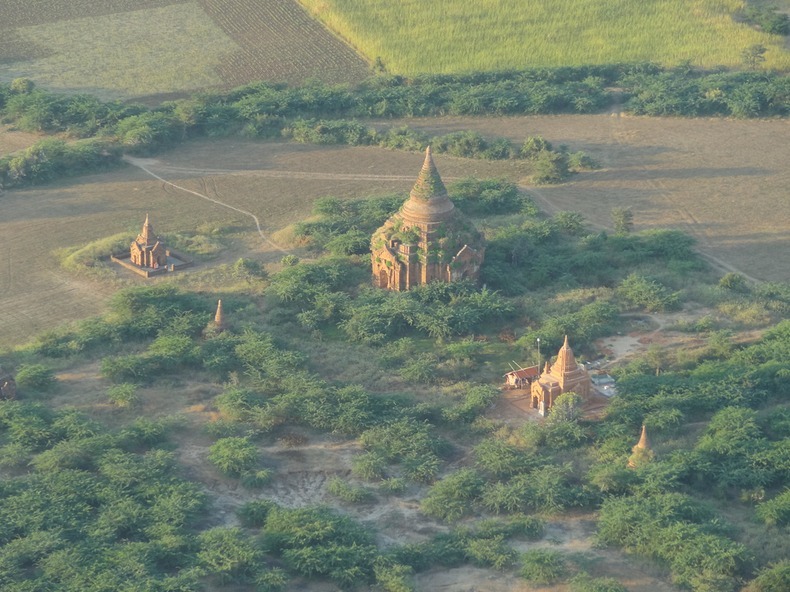Located on the banks of the Ayeyarwady (Irrawaddy) River, in the Mandalay Region of Burma, lies the ancient city of Bagan. From the 9th to 13th centuries, the city was the capital of the Kingdom of Pagan, and the political, economic and cultural nerve center of the Pagan Empire. During the kingdom's height between the 11th and 13th centuries, the wealthy Pagan rulers commissioned thousands of temples to be built in the Bagan plains. It is estimated that over 10,000 Buddhist temples, pagodas and monasteries once stood on this 100 square km plain in central Myanmar, of which the remains of over 2200 temples and pagodas still survive to the present day.
Bagan became a central powerbase in the mid 9th century under King Anawratha, who unified Burma under Theravada Buddhism. Over the course of 250 years, Bagan's rulers and their wealthy subjects constructed over 10,000 religious monuments in the Bagan plains. The prosperous city grew in size and grandeur, and became a cosmopolitan center for religious and secular studies. Monks and scholars from as far as India, Ceylon as well as the Khmer Empire came to Bagan to study prosody, phonology, grammar, astrology, alchemy, medicine, and law.
Bagan's golden age ended in 1287 when the Kingdom and its capital city was invaded and sacked by the Mongols. Its population was reduced to a village that remained amongst the ruins of the once larger city. New religious monuments still went up to the mid-15th century but afterward, temple constructions slowed to a trickle with less than 200 temples built between the 15th and 20th centuries. The old capital continued to be a pilgrimage destination but pilgrimage was focused only on the most prominent temples. The rest thousands of less famous, out-of-the-way temples fell into disrepair, and most did not survive the test of time. Others were consumed by natural calamities, such as earthquakes.
In present day, only a few dozen temples are regularly up kept. In the 1990s, the government made an effort to restore many of these damaged pagodas, but the failure to retain the original architectural styles and the use of modern materials drew widespread condemnation from art historians and preservationists worldwide. Bagan had to pay the price of the government's irresponsible act when UNESCO rejected the city as a designation for World Heritage Site due to the un-historic way the temples were restored, although the government believes that the ancient capital's hundreds of unrestored temples and large corpus of stone inscriptions were more than sufficient to win the designation.


















No comments:
Post a Comment